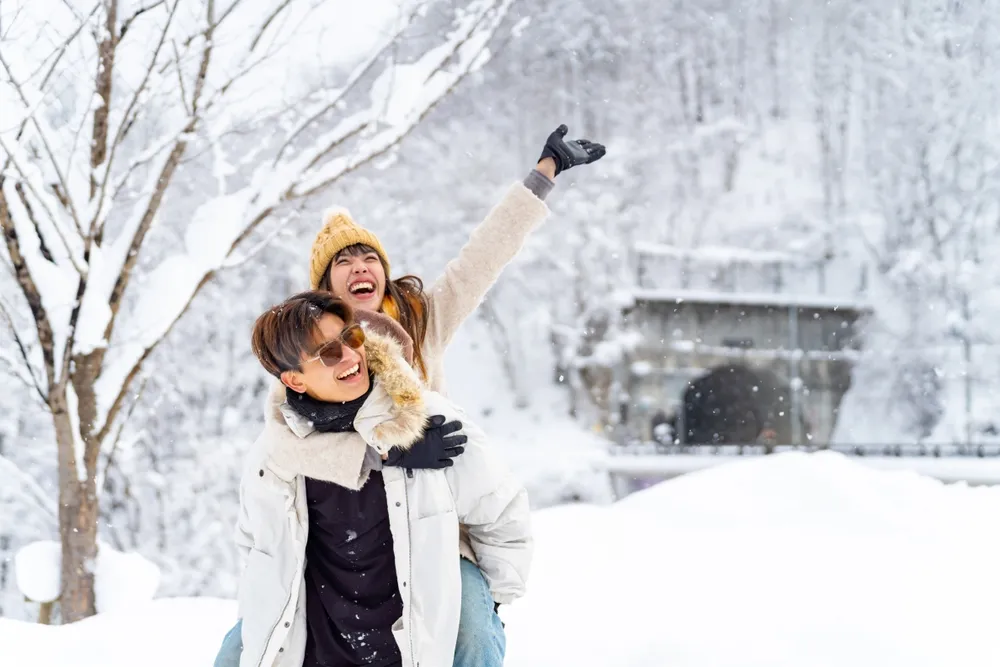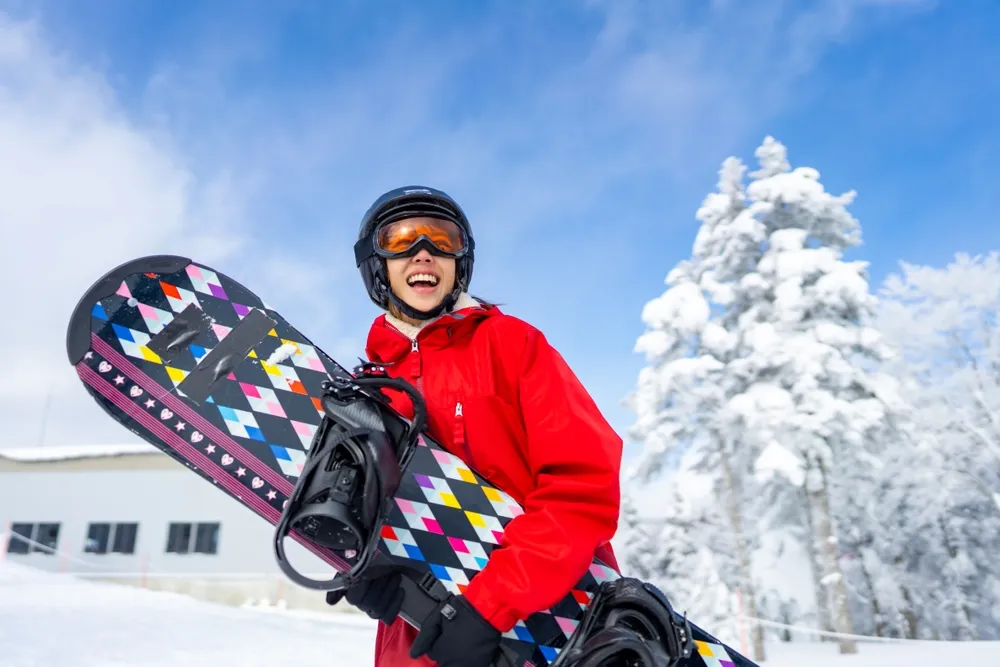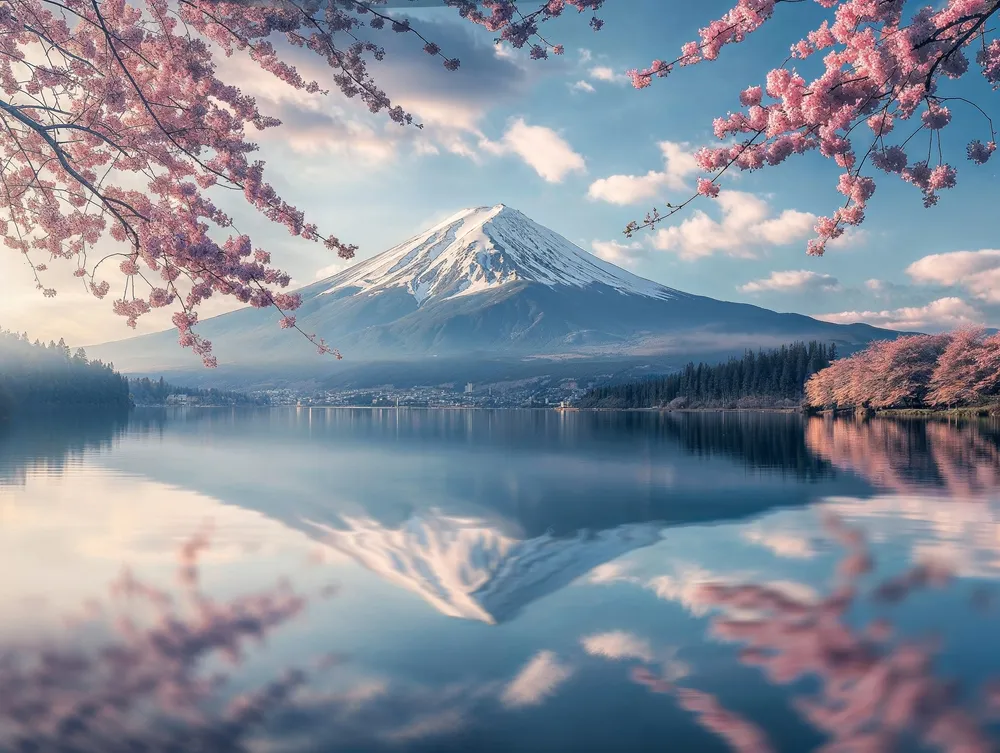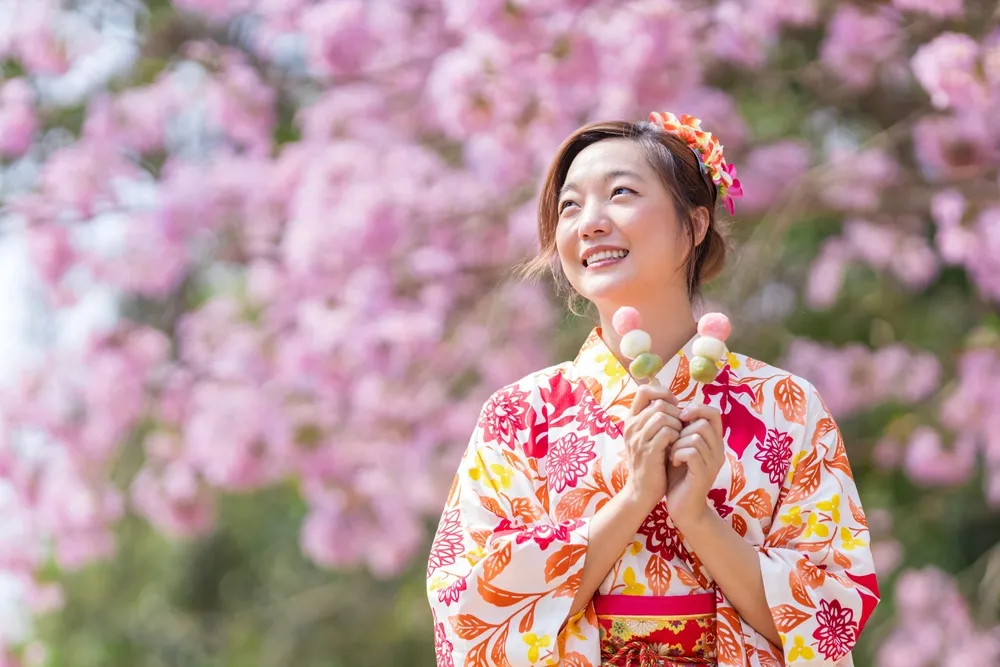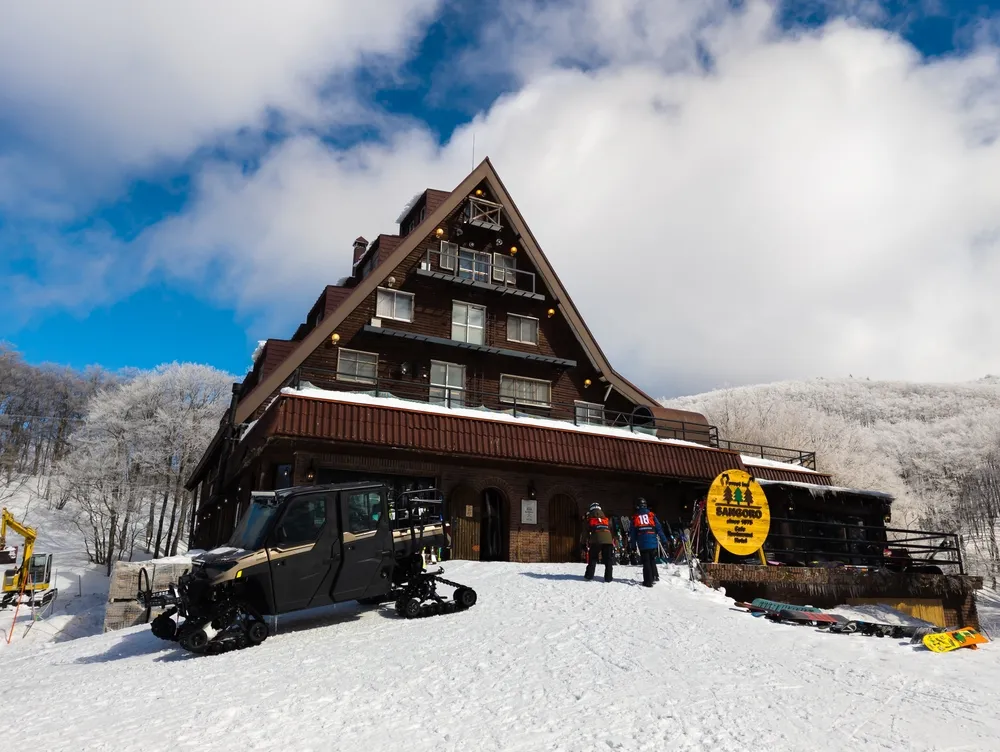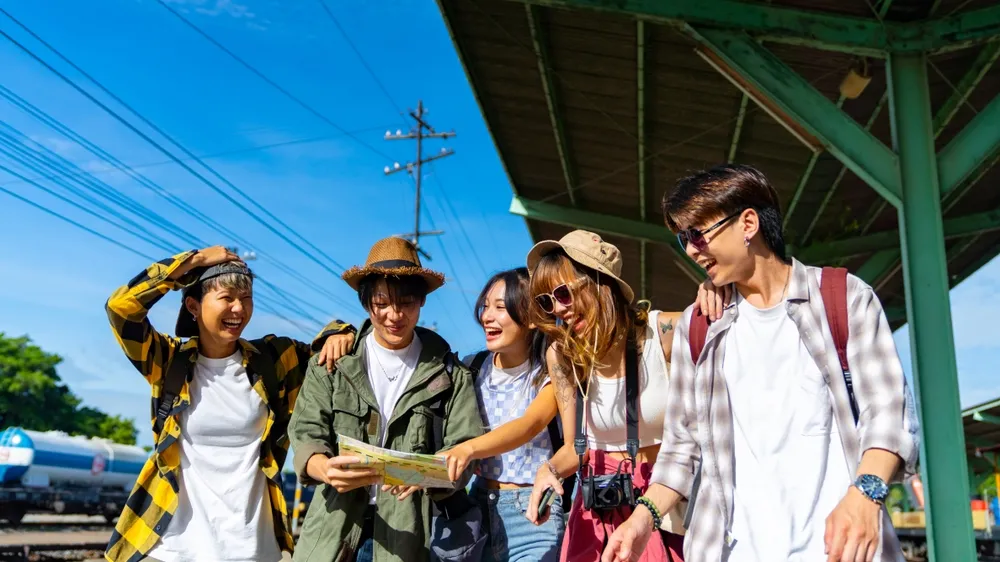While skiing and snowboarding are the stars of Japan’s winter scene, there are plenty of other family-friendly activities to enjoy. If you’re traveling with kids, these alternatives allow everyone to enjoy Japan’s snowy landscapes in a relaxed setting:
Snowshoeing Adventures
For those looking to explore Japan’s winter landscapes at a slower pace, snowshoeing is a fantastic option. Guided tours through snowy forests and serene mountain trails provide an opportunity to connect with nature and enjoy the tranquility of Japan’s winter wilderness. It’s an activity that even younger children can enjoy with minimal skill required.
Ice Fishing in Scenic Lakes
In regions like Hokkaido, ice fishing is a popular family activity. Spend a relaxing day fishing on frozen lakes, where you can catch Japanese smelt (wakasagi) and even enjoy a freshly cooked meal made with your catch. The experience combines the thrill of fishing with the novelty of sitting on a frozen lake, making it a memorable outing for families.
Snow Tubing and Sledding
If your family loves speed but prefers a gentler activity than skiing, snow tubing and sledding are perfect choices. Many ski resorts in Japan feature dedicated tubing parks with well-groomed tracks, ensuring a safe and fun experience for everyone. This activity is especially popular among younger children and provides hours of excitement.
These family-friendly activities make Japan an excellent winter destination, catering to both thrill-seekers and those looking for a more relaxed snowy experience.
Tips for Filipino Travelers Visiting Japan for Winter Sports
For Filipino travelers planning a winter sports trip to Japan, a bit of preparation can make your experience smoother and more enjoyable. Here are some essential tips to consider before you go:
Currency Exchange and Budget Planning
Japan primarily uses the Japanese yen (JPY), and it’s a good idea to exchange your currency before arriving. While major cities have ATMs that accept international cards, rural ski resorts might have limited options. Planning your budget ahead of time will help you avoid unnecessary stress.
Understanding Local Cuisine and Dietary Preferences
Japanese winter cuisine is both delicious and comforting. Warm up with local favorites like hotpot (nabe), miso ramen, and tempura. For halal or vegetarian options, it's wise to do a bit of research or ask your hotel staff for recommendations. Many resorts now cater to diverse dietary preferences, making it easier for Filipino travelers to enjoy the local food scene.
Language Tips and Helpful Phrases
While English is commonly spoken in major tourist areas, rural ski towns may present a language barrier. Learning a few basic Japanese phrases, such as "arigatou gozaimasu" (thank you) and "sumimasen" (excuse me), can go a long way. Most ski resorts also have multilingual staff, especially in popular areas like Hokkaido and Nagano.
Embrace Japanese Onsen Culture
After a long day of winter sports, nothing beats the experience of relaxing in an onsen (hot spring). Onsen etiquette is important: remember to rinse off before entering the hot springs and avoid wearing swimsuits unless specifically allowed. It’s a soothing way to end your day and immerse yourself in local culture.
Budget-Friendly Winter Sports Options in Japan
Enjoying winter sports in Japan doesn’t have to break the bank. Here are some tips for finding budget-friendly options:
Choose Smaller, Lesser-Known Ski Resorts
While famous resorts like Niseko and Hakuba offer world-class facilities, smaller resorts such as Nozawa Onsen and Myoko Kogen provide excellent skiing at a fraction of the price. These resorts often have fewer crowds, making them perfect for travelers on a budget.
Look for Discounted Lift Passes and Packages
Many ski resorts offer early bird discounts on lift passes if you book in advance. Additionally, consider purchasing multi-day or family passes, which can save you money compared to buying single-day tickets.
Affordable Accommodation Options
Opt for staying in traditional Japanese inns (ryokan) or budget-friendly hostels. These options not only save money but also provide a more authentic cultural experience. Many ryokan offer meals included, which can be a great way to sample local cuisine while keeping costs low.
With a bit of planning, you can experience Japan’s incredible winter sports scene without overspending.
Protect Your Winter Adventure with Oona Travel Insurance
As you get ready for your winter adventure, don't forget to get travel insurance. Oona Travel Insurance Philippines offers complete coverage made just for winter sports lovers. With Oona, you can relax knowing you're covered in case of unexpected events like trip cancellations, medical emergencies, or lost gear.
Oona’s travel insurance plans make sure you’re protected, so you can focus on enjoying your time on the slopes—whether you're tackling tough trails or having fun on the beginner hills. With Oona, you're all set for your snowy getaway!
Maximizing Your Japanese Winter Sports Experience
To truly make the most of your trip, embrace both the winter activities and the cultural experiences. Enjoy skiing or snowboarding during the day and unwind in a soothing onsen afterward. With Oona Travel Insurance, you can rest easy knowing you’re fully covered, allowing you to fully immerse yourself in Japan’s winter charm.
Conclusion
Japan's winter sports season promises an unforgettable adventure. For Filipino travelers, visiting between mid-January and late February guarantees the best snow conditions, but December and March also offer their own unique appeal. By choosing the right time and resort, you can tailor your winter sports getaway to suit your preferences.
Be sure to plan ahead, and don't forget to protect your trip with Oona Travel Insurance. Whether you’re enjoying skiing, snowboarding, or exploring Japan's cultural gems, Oona Travel Insurance ensures you’re safe and protected every step of the way.
Start planning your winter sports getaway now, and let Oona Travel Insurance help you focus on the fun and adventure, not the unexpected surprises!
